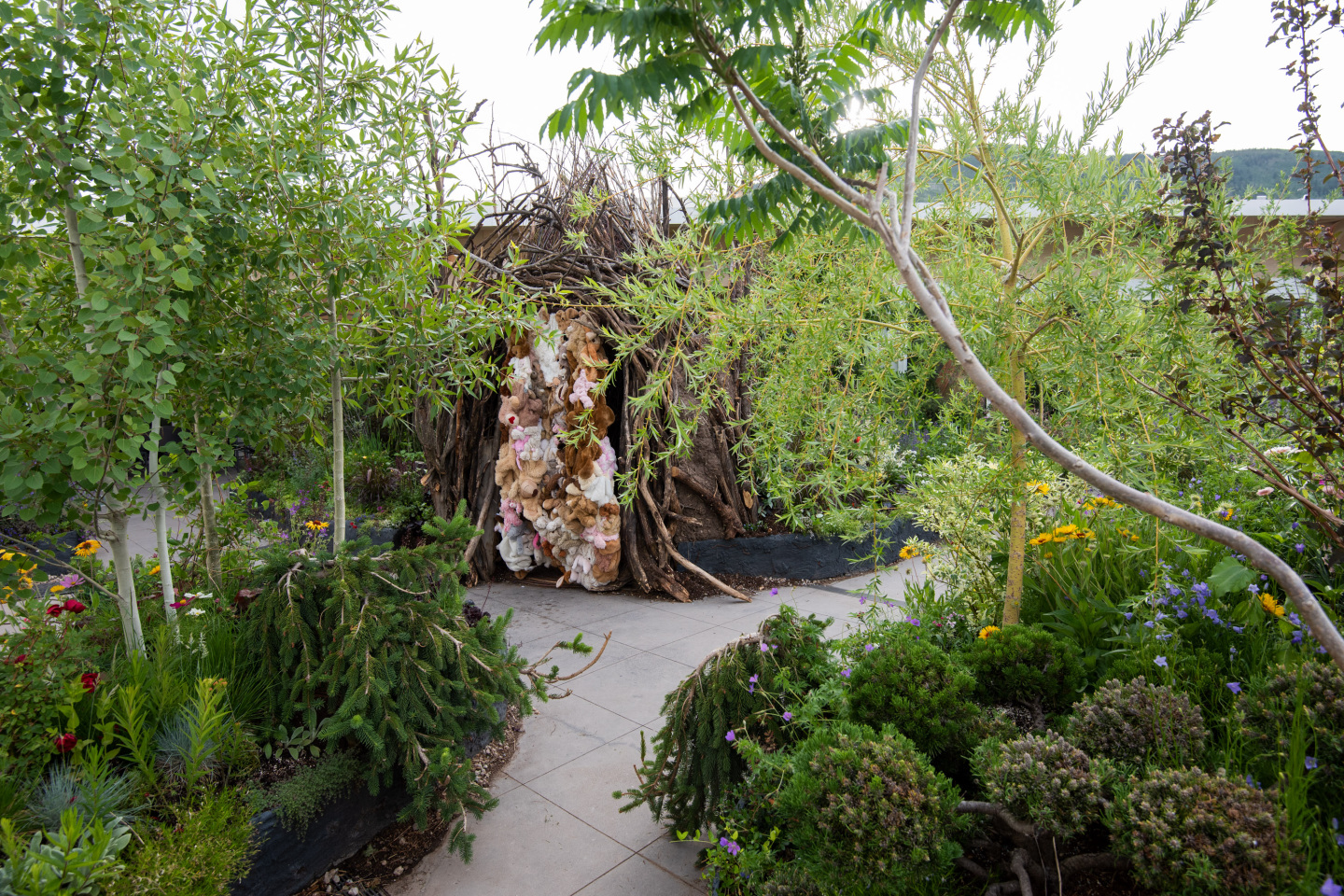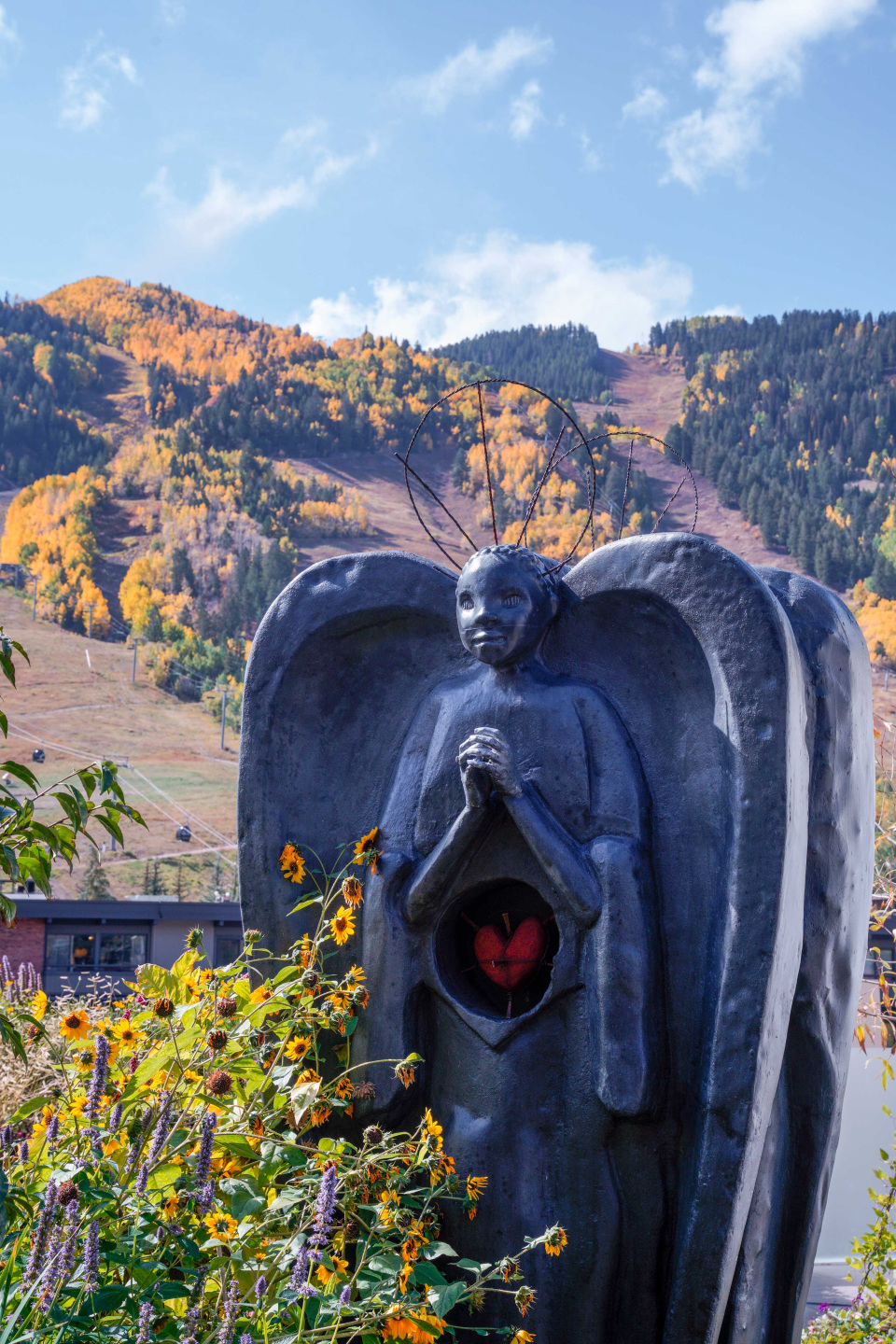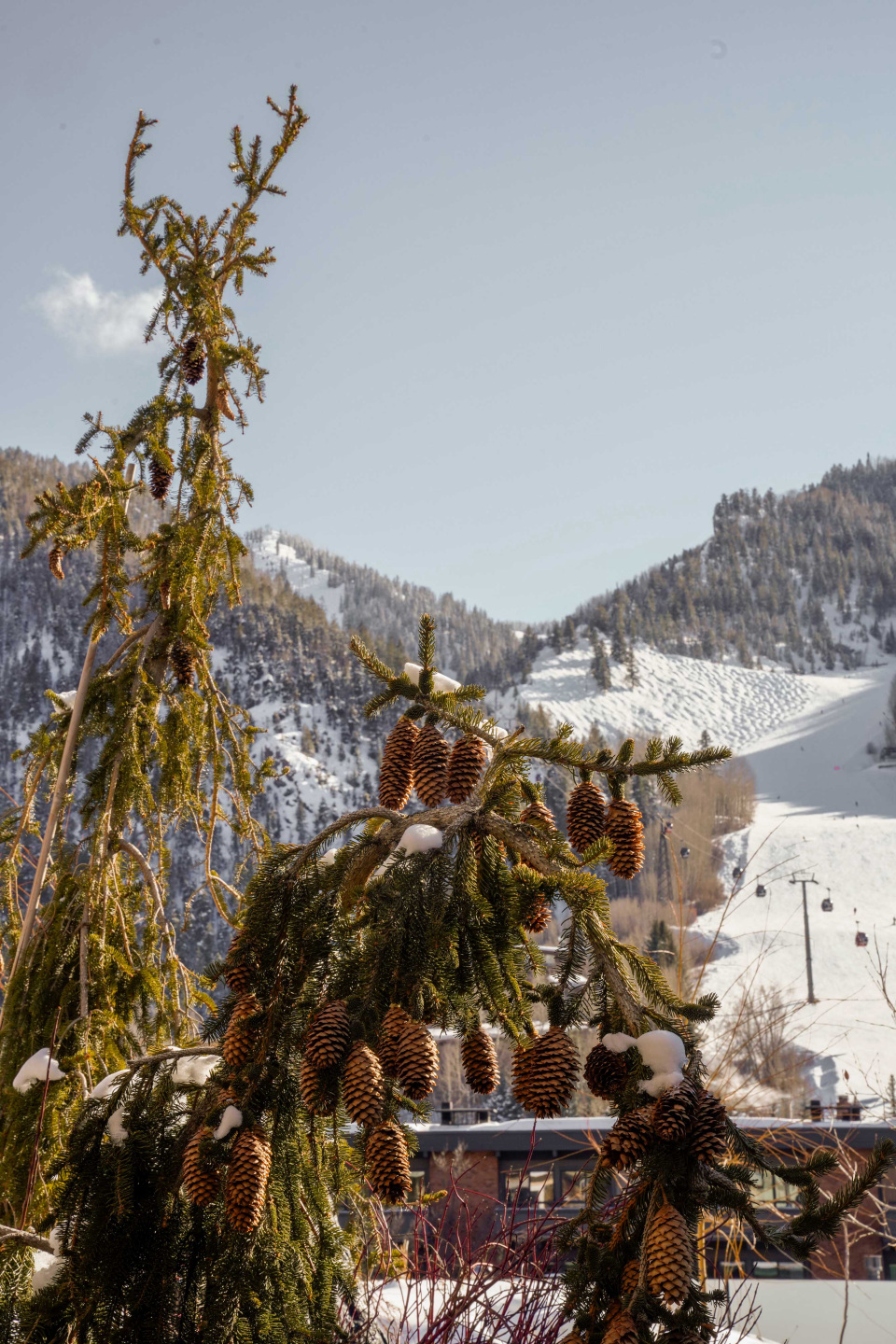Cultured Magazine: How was sustainability factored into bringing a garden to the museum?
Nicola Lees: The Aspen Art Museum wanted to do a long-term exhibition different from anything we had done before. The idea was that “Every Earthly Morning the Sky's Light touches Ur Life is Unprecedented in its Beauty” would have the time to grow, change and morph throughout its 18-month-long installation. This time allowed the exhibition to root itself in the community and the special opportunity to work with Bluegreen, a local landscape design firm, to develop a deeper understanding of Aspen's unique topography. Essentially, this exhibition could only exist in Aspen and could not be replicated anywhere else. When the winter iteration was initially planted and created, the idea behind the artistic choices was to see plants and place sculptures you could not see in winter. However, now are fully visible when you visit the garden in full bloom—essentially showcasing the evolution of nature through its seasons.
Unique sculptures were also used in the garden; we had an angel, other figures, an oven in the winter, and now a hut. The idea of placing sculptures was to slow down time and make space—a space to create. All materials were locally sourced and sustainably purchased. Precious Okoyomon is mindful of the materials never being imported but sourced within the community.
Forging local ties with the community is another way to maintain a museum's sustainability with the artistic community. We collaborated with Anderson Ranch last summer, and Precious currently has a studio at SAW (Studio for Arts and Works) in Carbondale, Colorado.








CM: There are so many different threads growing out of this one project. How do you see and tend to all of them?
NL: We strive to be ambitious and create opportunities that are unique for artists. For example, Precious built an oven that turned on weekly in the winter as part of the exhibition's public programming and was activated for the community to burn and release their fears. The installation is reflective of the interdisciplinary nature of Okoyomon's practice. Additionally, we did an immersive tasting and performance last year at Pine Creek Cookhouse, located in Ashcroft, Colorado, with Precious.
Precious collaborated with artists to create the musical component of the garden. Each garden installation opening corresponded to the year's equinox and solstices. The most recent June 21 opening included a poetry reading by Diamond Stingily and Simone White that was devised by Okoyomon.
CM: How do you see this show fitting into the larger vision of the museum?
NL: At the Aspen Art Museum, we look to artists and thinkers to lead the way. We eagerly join them on their journey, providing our support while gaining insights into their creative thinking, which informs our future as an institution. The relationships we develop and maintain with artists deeply impact the way we work. In our vision of the future, the Aspen Art Museum is continually regenerating itself, as we evolve through our exchanges with artists and thinkers and our ability to engage in self-criticism.
This next year, we are continuing to pursue ambitious and impactful projects that can inspire and challenge our Aspen community and resonate with our friends and colleagues globally. Three new projects give voice to our aspirations, expressing the breadth and range of our mission. I am grateful and humbled that we have such voices in our growing and dynamic community. First, we go inside the mind of Gaetano Pesce, one of the world’s most influential multidisciplinary artists. Celebrated worldwide, Pesce’s work is driven by risk-taking curiosity and radical thinking, blurring the boundaries between art, design and architecture. We are privileged to work deeply with Pesce and are thrilled to celebrate his work with his forthcoming site-specific intervention on the Museum’s façade and an accompanying exhibition, “My Dear Mountains.” Next is “Mountain / Time,” an ambitious and collaborative exhibition of time-based media, which is occupying the entire building, as it presents work by 12 intergenerational artists who explore the remapping of histories and geographies, as they excavate the past to re-imagine the future. This is curated by Chrissie Iles, the Anne and Joel Ehrenkranz Curator of Film and Video at the Whitney Museum of American Art. Finally, artist Jeffrey Gibson is embarking on a new exciting performance, exhibition and rooftop installation, planned for this summer through next fall, titled The Spirits Are Laughing. Evolving out of conversations about land acknowledgements, Gibson’s new work speaks to land as a living entity, and ultimately (as Gibson describes it) “an extension of ourselves.”
CM: What kind of research went into the planning of the show?
NL: With extensive conversations with the team, local collaborators and artists, additionally working with the world’s leading curators, we were allowed to create a collaborative effort for the programming and installation as a whole. We are very thankful to be able to work with curator Claude Adjil and Giovanni “Gio” Escobar, our music collaborator for the exhibition.










 in your life?
in your life?

